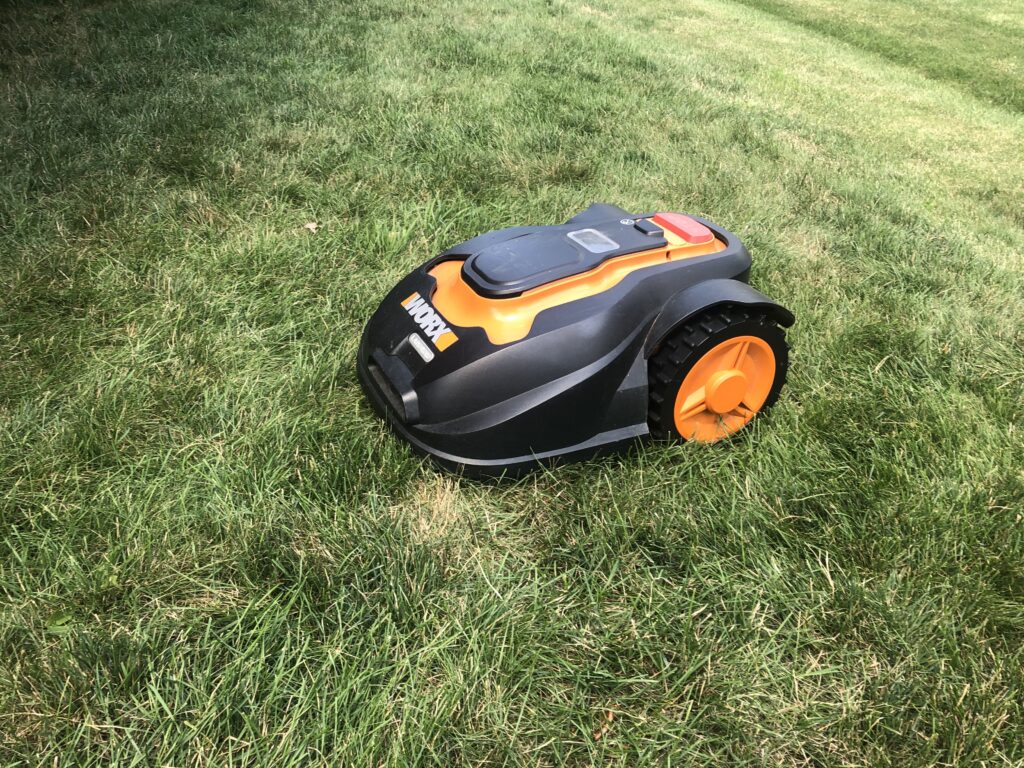
While Mo is great, and saves us a lot of time, my husband and I soon realized–as new homeowners–that a lush green grass isn’t guaranteed with only regular mowing and that other factors can impact grass health. In our case, creeping charlie, or ground ivy, crept in rather handily to one area of our lawn, and another area was damaged during a yard project. Since weeds can take over when a lawn is not healthy (which we suspected as a possible reason that creeping charlie was able to be so successful where it had come in) and to best prepare to re-establish the lawn in the damaged area, we knew that it was important to understand characteristics of our soil. This is true for anyone who wants to maintain a healthy lawn. Understanding the health of your soil can inform actions you take to keep your grass healthy.
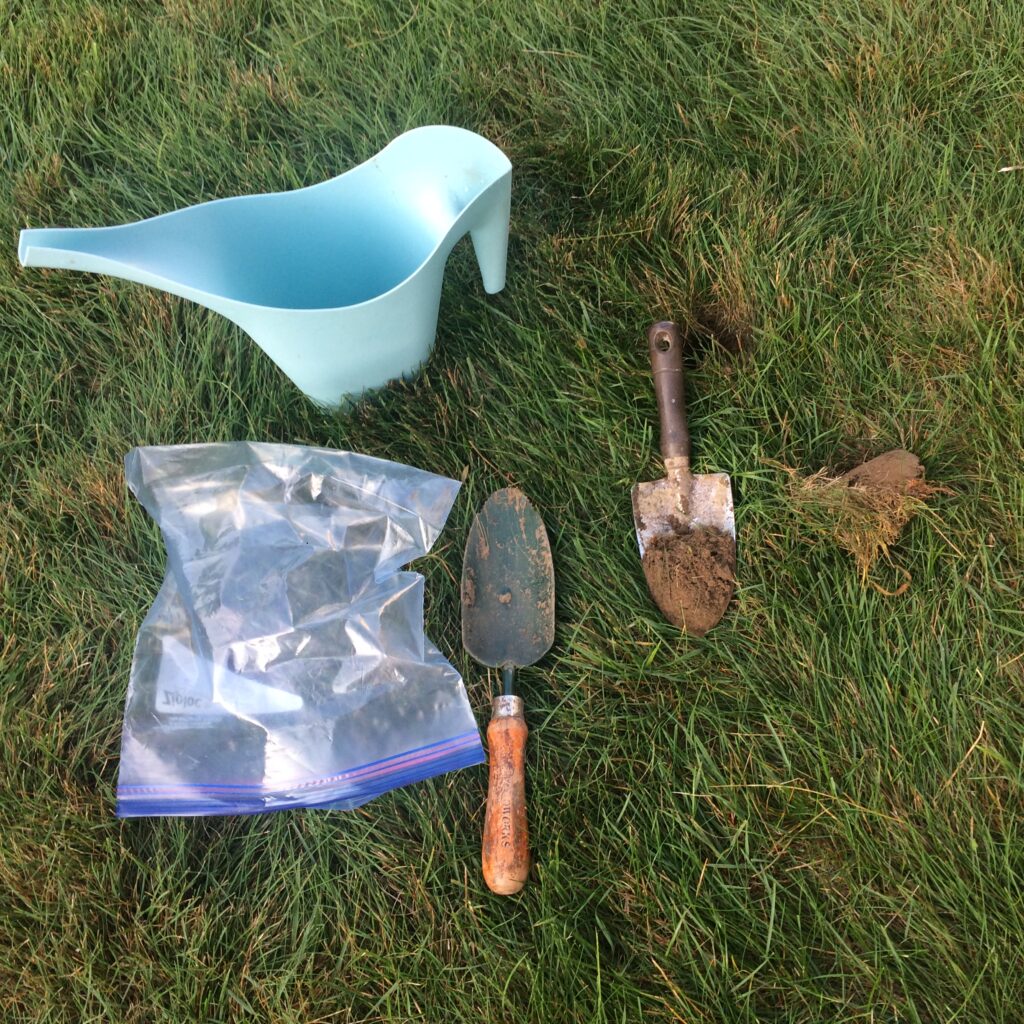
Here in the Lake Champlain basin, the UVM Agricultural and Environmental Testing Laboratory is a valuable resource to guide landowners through the soil sampling process, and to analyze the sample once it is collected. They provide step-by-step guidance on how to collect a soil sample. For those without a soil probe, like us, you can sample using a trowel or shovel. I found it easiest to use two.
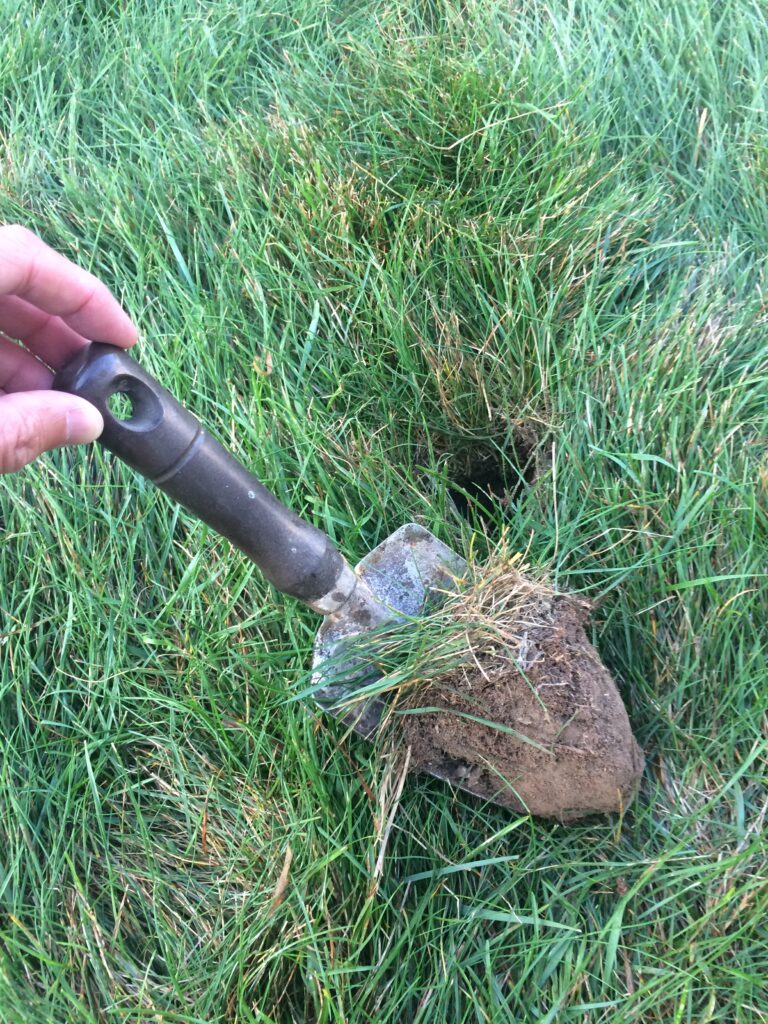
Their guidance explains that it is very important to sample from at least 10 locations in your yard (collected in a zig-zag pattern) and to combine those samples into one for analysis.
To sample, initially, push the trowel into the ground to a depth of about 4-6″, creating a triangle shape of ground to remove from the lawn. Set this aside, so you can later replace it to hide the location where you collected the soil sample.
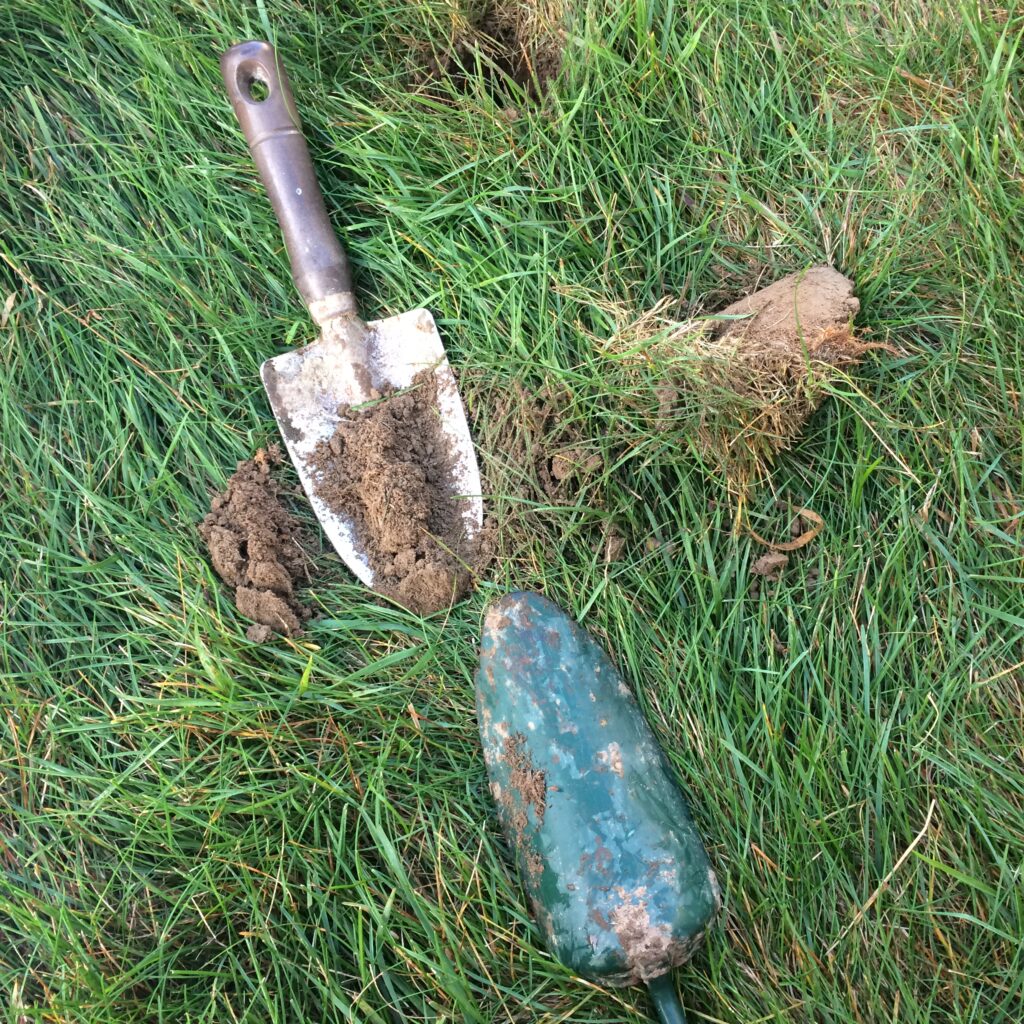
Next, re-insert the trowel into the open hole, cutting out a 1/2″ sliver of soil from one of the edges. Then cut away the edges of that sample, leaving about a 1″ mid-section of soil.
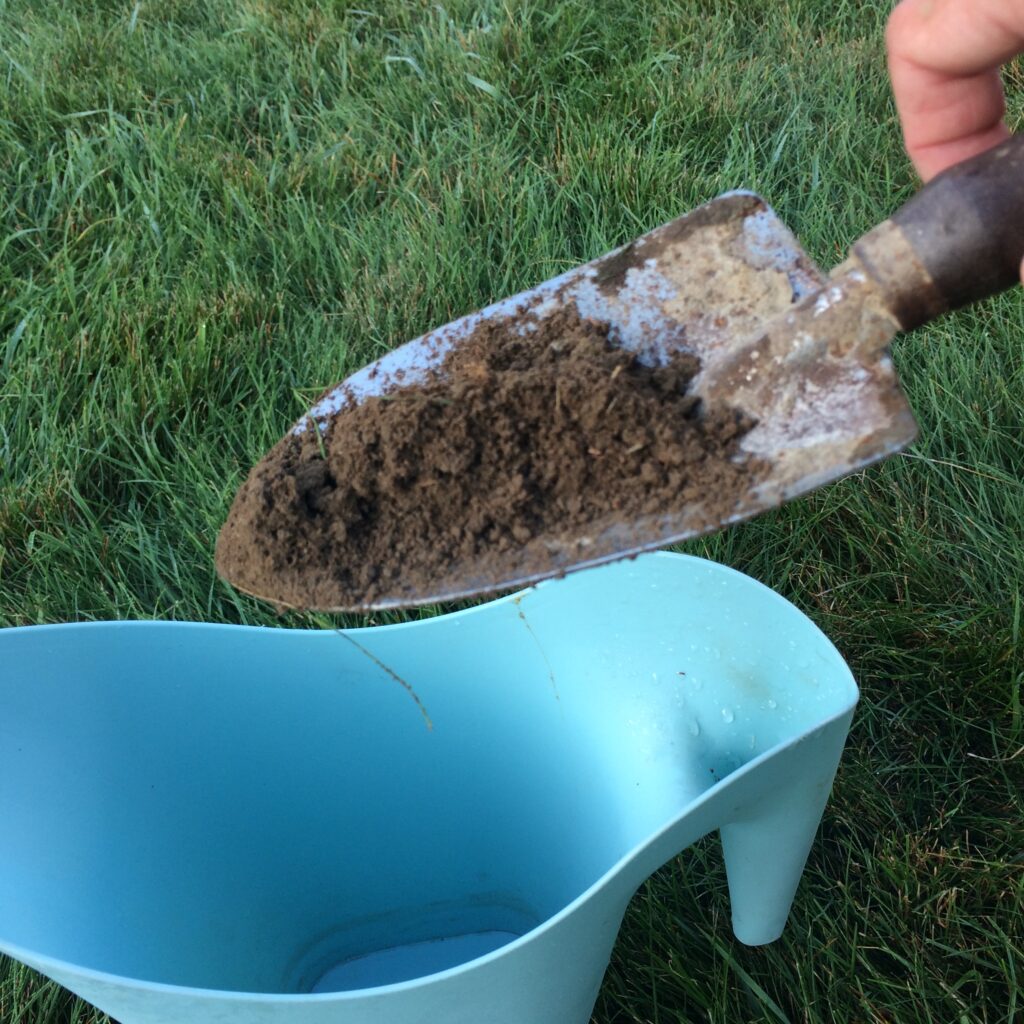
Add that sample to the container into which you are collecting samples.
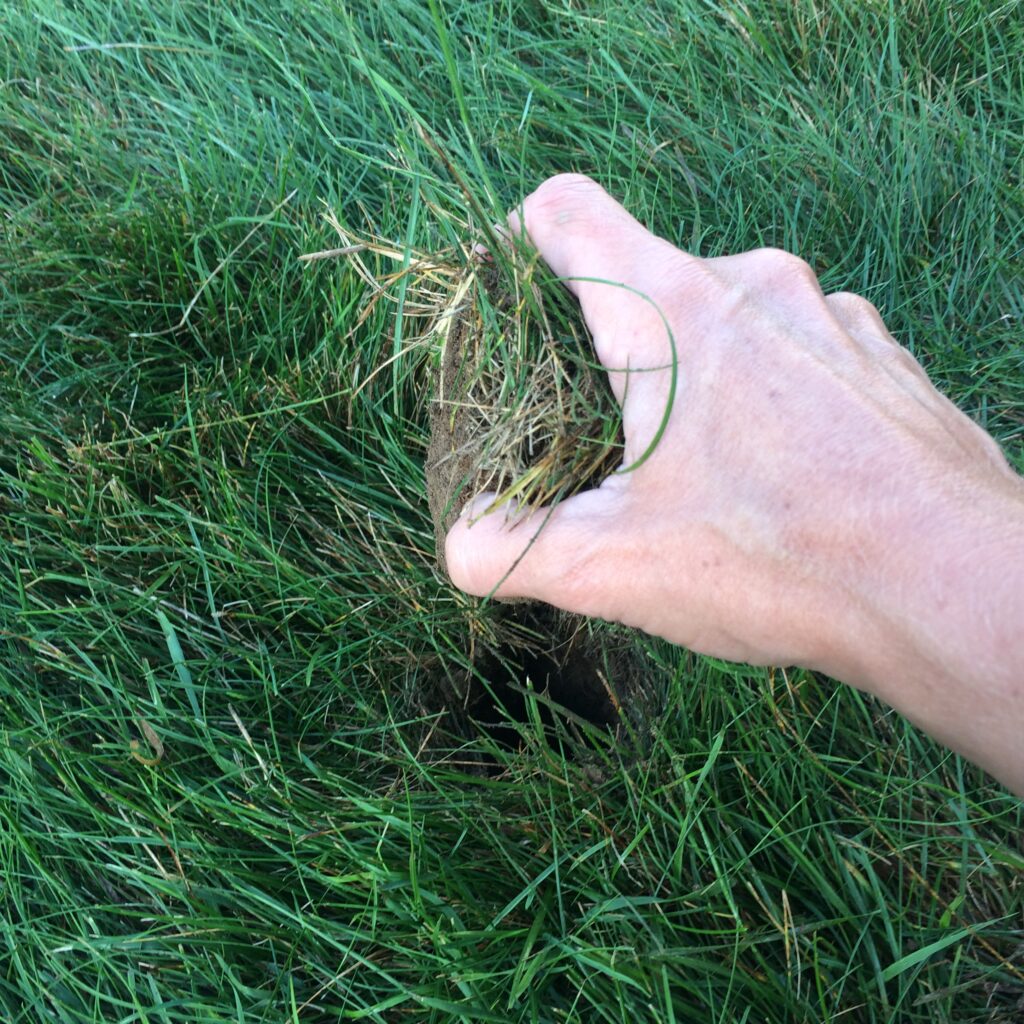
Replace the triangle-shaped piece, and move to the next location to collect a sample.
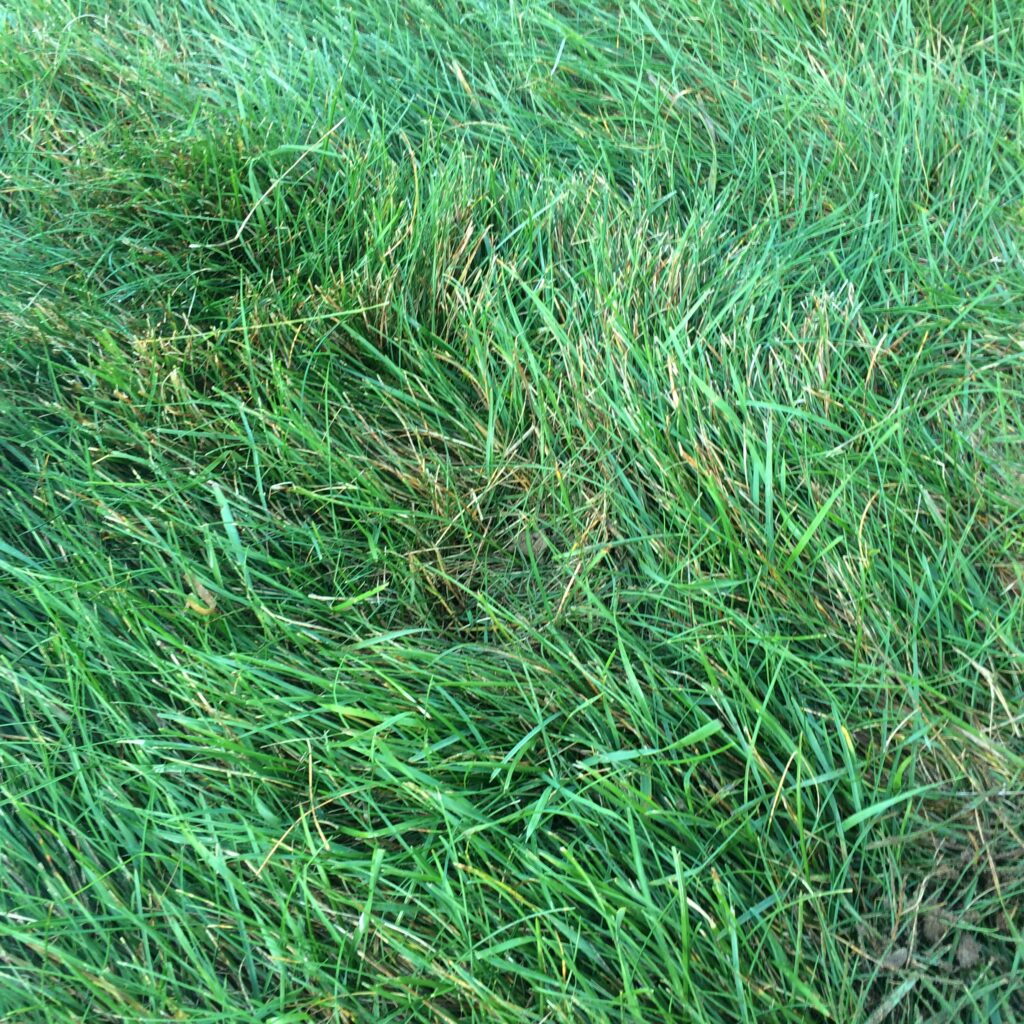
After you add the triangle piece back to the lawn, the spot from which you sampled is completely hidden.
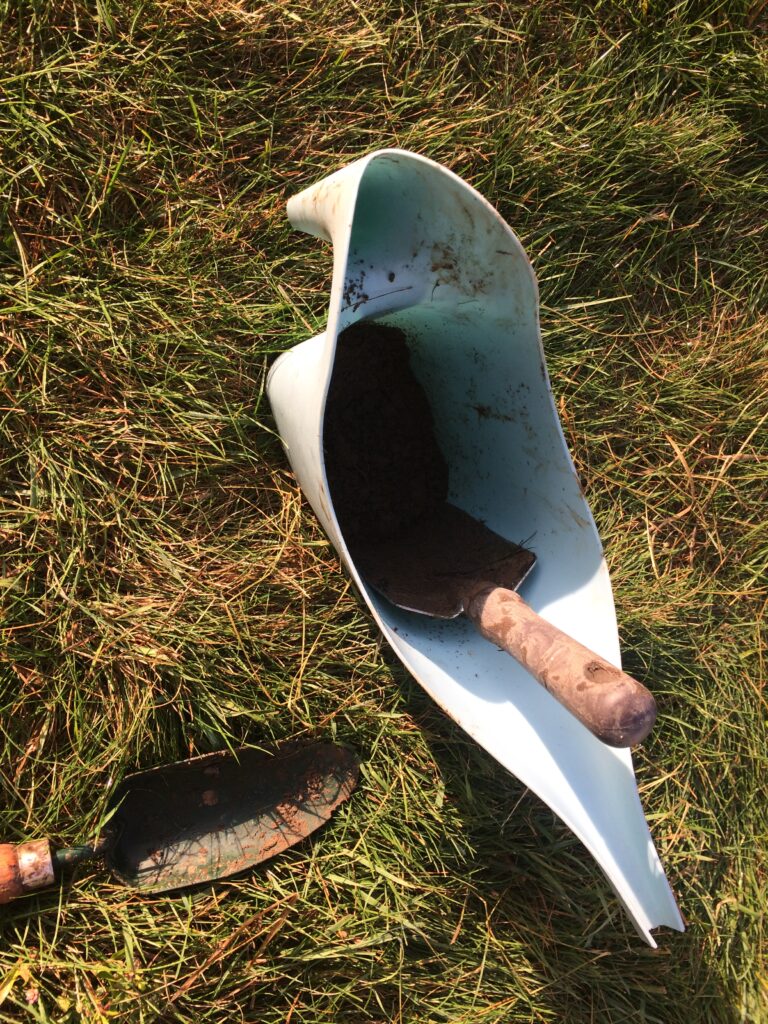
After you have collected the 10 samples, mix all of the soil in the container to create a uniform mixture.
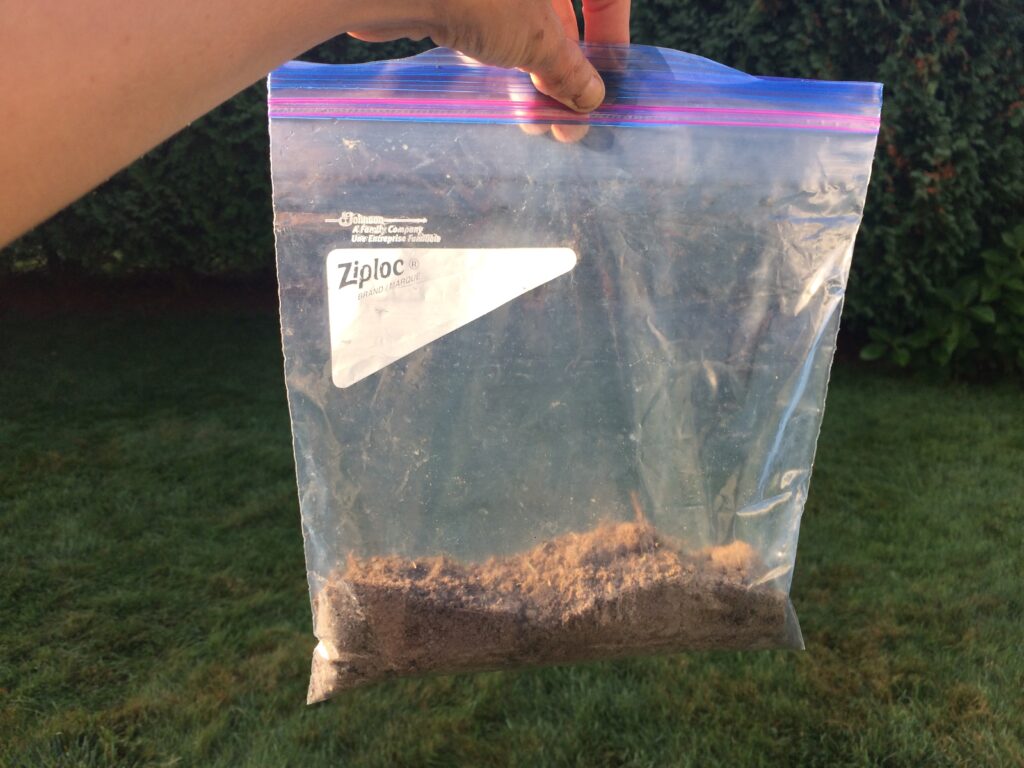
Add this to your sample bag, complete the form that you can download from the lab’s website, and send the sample and payment to the lab. You can expect results in a few weeks (accounting for shipping time for your sample to reach them).
The results come with easy to understand guidance on how to interpret them, including recommendations on how much and which nutrients to apply based on your results.
We learned some useful information and good lessons as we collected the soil samples and took action to re-establish our lawn in the two troubled areas. These include:
- Sampling the soil with the trowel was not easy in our very clayey soil (which was sometimes overlaid with small rocks spilled there during the yard project). As a result, we may not have sampled quite deep enough. In the future, we will borrow or buy a soil probe to simplify the sampling process.
- In Vermont and New York, fertilizers with phosphorus can only be used on lawns if a soil test confirms phosphorus is needed or when establishing a new lawn. You can learn more about these regulations and the reason why the simple message to remember is “Don’t P on your lawn” at the Lawn to Lake website. Since general fertilizing of lawn is recommended for early fall (and not during other times of the year), August is a great time to sample soil in preparation for fertilizing as is needed.
- The creeping charlie in our yard was effectively killed by laying a large tarp on the infested area from early August through the winter until late April/early May. At that point, we removed the tarp, turned over the soil with a shovel, removed dead plant material that remained, fertilized (following guidance for establishing a new lawn), and re-seeded the area. We compacted it just by walking on it due to COVID business closures and inability to rent a roller.
- To establish a new lawn, daily watering is critical. In the area that had been damaged during the yard work, we watered, but not as consistently as we might have. That resulted in numerous weeds sneaking in, which then had to be dealt with later.
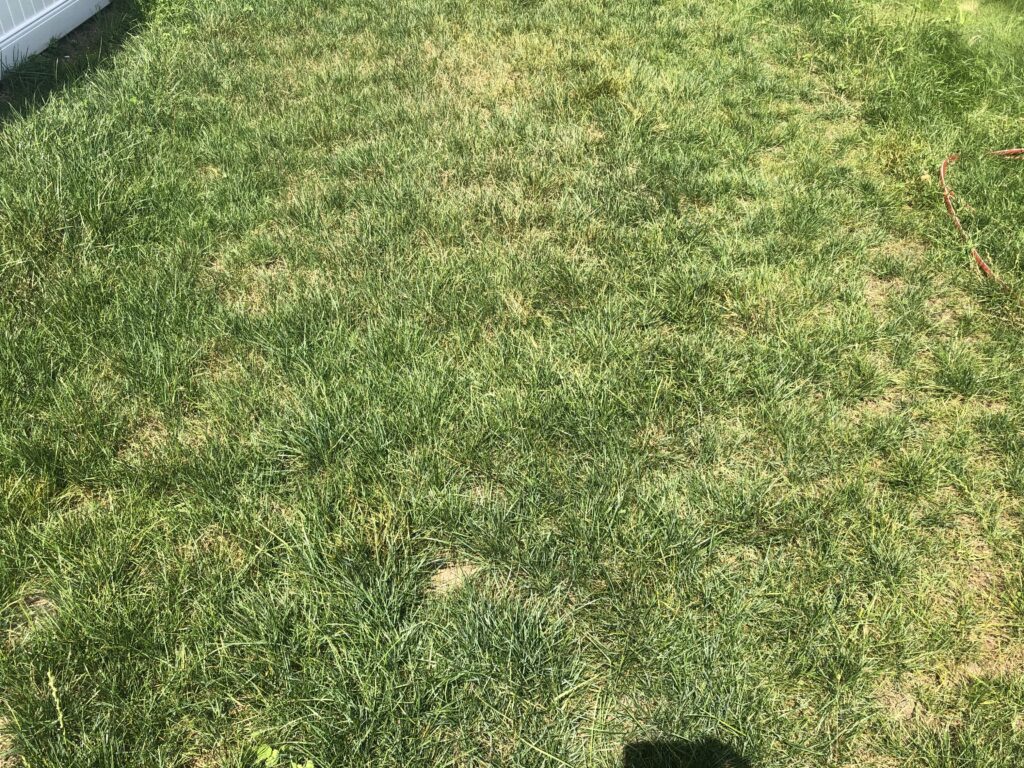
In the area that had the creeping charlie (shown at left), we were very consistent in daily watering this spring and the grass thrived. (Note: creeping charlie has since developed in a ~10″ strip along one edge where the tarp didn’t quite cover. The plan is to place a tarp there to kill it in the next few weeks, and re-seed the area next spring.)